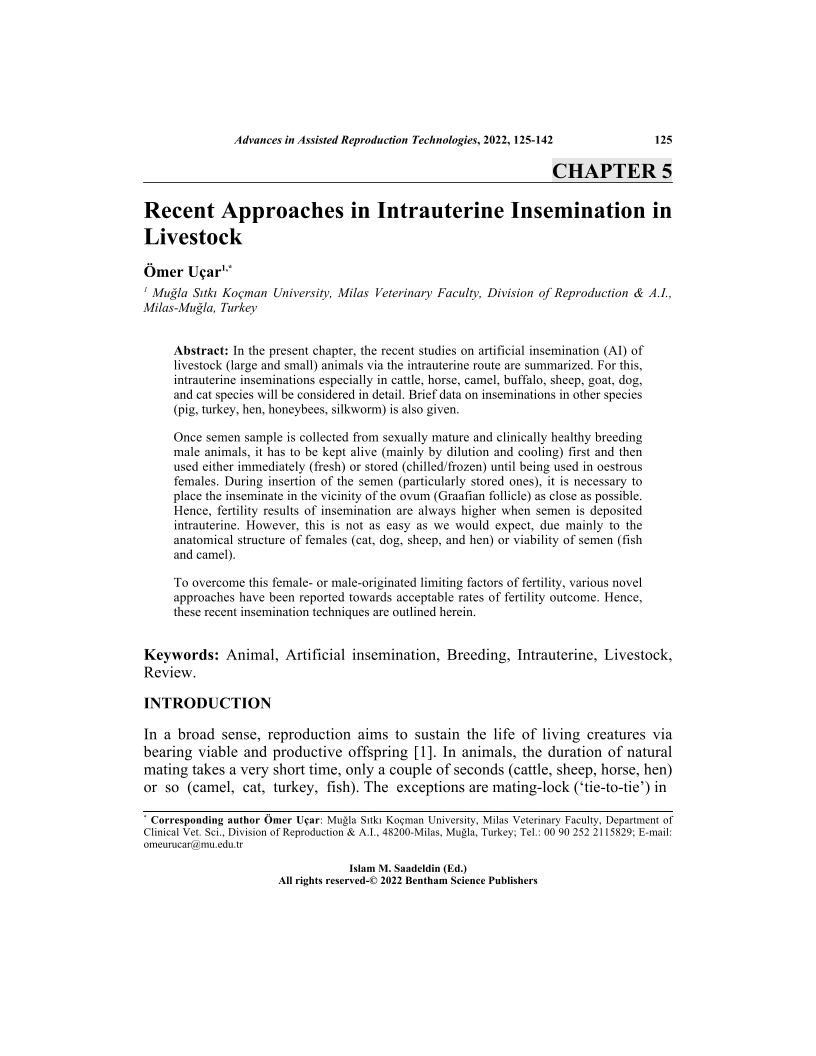Recent Approaches in Intrauterine Insemination in Livestock

- By Ömer Uçar1
-
View Affiliations Hide Affiliations1 Muğla Sıtkı Koçman University, Milas Veterinary Faculty, Division of Reproduction & A.I., Milas Muğla, Turkey
- Source: Advances in Assisted Reproduction Technologies , pp 125-142
- Publication Date: August 2022
- Language: English
Recent Approaches in Intrauterine Insemination in Livestock, Page 1 of 1
< Previous page | Next page > /docserver/preview/fulltext/9789815051667/chap5-1.gif
In the present chapter, the recent studies on artificial insemination (AI) of livestock (large and small) animals via the intrauterine route are summarized. For this, intrauterine inseminations especially in cattle, horse, camel, buffalo, sheep, goat, dog, and cat species will be considered in detail. Brief data on inseminations in other species (pig, turkey, hen, honeybees, silkworm) is also given. Once semen sample is collected from sexually mature and clinically healthy breeding male animals, it has to be kept alive (mainly by dilution and cooling) first and then used either immediately (fresh) or stored (chilled/frozen) until being used in oestrous females. During insertion of the semen (particularly stored ones), it is necessary to place the inseminate in the vicinity of the ovum (Graafian follicle) as close as possible. Hence, fertility results of insemination are always higher when semen is deposited intrauterine. However, this is not as easy as we would expect, due mainly to the anatomical structure of females (cat, dog, sheep, and hen) or viability of semen (fish and camel). To overcome this female- or male-originated limiting factors of fertility, various novel approaches have been reported towards acceptable rates of fertility outcome. Hence, these recent insemination techniques are outlined herein.
-
From This Site
/content/books/9789815051667.chap5dcterms_subject,pub_keyword-contentType:Journal -contentType:Figure -contentType:Table -contentType:SupplementaryData105

